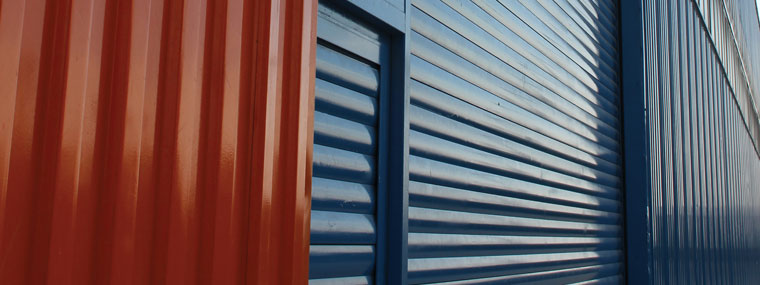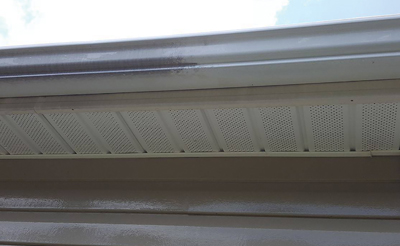
Cleaning Aluminum Siding and Vinyl
By Diane M. Calabrese / Published July 2022

Brick endures. It’s beautiful. It’s also expensive to install and maintain.
Wood was the go-to affordable material for exteriors until the 1940s, when aluminum siding entered the competition. Aluminum siding quickly verified its reputation for being low maintenance and, as a nice bonus, waterproof, insect-proof, and fire-resistant.
Yet by the 1970s aluminum had begun to be displaced. Vinyl is now the top choice for a low maintenance, waterproof, and insect-proof exterior. It’s also easier to install—we have all seen the big swaths of vinyl with simulated panels—and according to research has a relatively low impact on the environment during its manufacturing.
Prevalence of aluminum and vinyl varies across the nation. Both types of exteriors are much more common east of the Mississippi River. In the New England, Middle Atlantic, and East North Central States, the dominant material is vinyl.
Manufacturers of aluminum siding and vinyl provide instructions on how to clean. But there’s no better source of information than colleagues in the industry, and the experts begin at the beginning.
“The common requirement is to understand the soil being removed from the surface so that you can understand what is required to clean it,” says Joseph Daniel, CEO of ITD Chemical LLC in Tucker, GA. Mold is a primary issue of concern for many property owners because they can see it.
A contract cleaner is likely to see more mold on vinyl, explains Daniel, “Mold is not going to grow and adhere as readily to aluminum as it will to vinyl [because] aluminum is less porous. However, both are susceptible to mold growth under the right conditions.”
Distributors can give contractors the most up-to-date information about products developed to ease their tasks, mold inhibition included. “The most common and economical mold management chemical utilized is chlorine bleach, or sodium hypochlorite,” says Daniel.
Beyond the removal, though, there is a step many contractors miss, says Daniel “[That] is to follow behind with a long-term mold inhibitor, such as [my company’s] BioBarrier, which provides a mold-resistant barrier that can last up to three years, depending on the environmental conditions and surface type. Under harsh conditions it should last at least six months. This ensures the customer continues to see a clean surface with no mold growth long after you are gone.”
We read a great deal from the CDC [Centers for Disease Control and Prevention] these days, but what might be a surprise to some is the Healthy Housing Reference Manual published by the CDC. At 231 pages, it is available online in a pdf file.
The manual actually takes a no-nonsense approach to exteriors. It advises that irrespective of manufacturer warranties or claims, deterioration is the eventual path that all surfaces will follow. Attending to the cleaning and maintenance needs of exteriors helps them realize their
maximum longevity.
Education Customers
Contractors should talk with customers about the options that increase the life of an exterior surface. Not all customers will be receptive, and some contractors choose the approach of speed and repeat visits.
“Both [aluminum siding and vinyl] would benefit from the added process [of inhibitors], but many customers do not want to pay the added expense,” says Linda Chambers, brand and sales manager at Georgia Chemical Equipment (GCE) in Norcross, GA. “[Some] contractors do not want to spend the added time required as some products need the surface to be dry first to apply.”
But back to the first step, and a critical one. “Do not use hot water, as it can warp the metal or vinyl,” says Chambers.
“Second, know if you have or want to remove oxidation or degraded paint or vinyl from the siding,” say Chambers. “If, yes, you will need a cleaner with a caustic like sodium or potassium hydroxide that will loosen the oxidation. And you may have to use a soft brush to push off the oxidation residue that the cleaner has released since you do not want to use high water pressure that could damage the siding.”
Again, the customer may nix the second step, so be prepared. “If you do not want to disturb the oxidation because the customer does not want to pay for the extra time and costlier chemical to do so, then you need to use a mild cleaner that will just lift off soils and use very low pressure to rinse so as not to disturb the oxidation layer.”
The same chemicals can be used to clean aluminum siding and vinyl, says Chambers. “But they may need to be used in different strengths, depending on the soil concentration.”
Because aluminum siding and vinyl dominate the same geographic regions, it’s likely that contractors will be cleaning both surfaces regularly. There are some differences in the requirements for each.
“Aluminum, if older and painted, has a much higher chance of flaking or having paint peel off when using chemicals and pressure washing than with vinyl siding, where the color is normally part of the vinyl itself,” explains Chambers. Also, cleaning with too much pressure can dent aluminum, while the same pressure does not affect vinyl.”
But vinyl also has a unique character. “It is more porous and therefore may grow mold and mildew more rapidly and deeper than aluminum,” says Chambers. As a consequence, it may “need to be cleaned more often with stronger chemicals.”
Exposed to the same weather conditions, it may be vinyl that fares worse because its more textured surface accumulates spores of mold and algae more easily. But any degraded area on aluminum siding presents the same invitation for airborne propagules (and debris of all sorts) to adhere.
Contractor’s Concise How-To
The basics on how-to come to us from Henry Bockman, the president of PowerWashCompany.com in Germantown, MD. Let’s begin with the common requirements and approaches to aluminum siding
and vinyl.
“Both materials need to be cleaned with low pressure,” says Bockman. “Notice that I didn’t say ‘soft washing.’ Use a downstream injector, X-jet or M5 X-jet, or a pressure washer with a tip that will drop pressure down to 300 psi.”
What is the concern about soft washing? “Most of the soft-washing companies I’ve seen are spraying two percent to four percent mixtures of dish detergent and sodium hypochlorite on siding, and it’s causing oxidation and a lot of dead landscaping,” explains Bockman.
What does Bockman recommend? “Use a good soap that’s designed for cleaning siding, like Roof and HouseWash or Powerhouse. Doing so will help break down dirt and biological growth from the surface so it can be rinsed away at low pressure.” He adds that the soaps will also reduce streaks on windows and the black streaks on gutters.
Low pressure is essential, says Bockman. But good outcomes begin prior to cleaning. All preliminaries must be completed: tape off outlets, light fixtures, and anything that could be affected by the cleaning solutions like stained decks, wood doors, and other sensitive areas.
And when washing, “Avoid pushing water from the sides ‘behind’ the overlapped material and from underneath to avoid water intrusion behind the siding,” says Bockman.
[NB—Experienced contractors like Bockman can spot siding that has not been installed in the most proficient manner, and it’s something cleaning contractors must be wary of when giving an estimate. Both aluminum and vinyl expand and contract in response to temperature change, and if installation was haphazard, there could be gaps that must be avoided.]
“Both materials can oxidize, but the paint on aluminum tends to run down and stain surfaces below it when it gets heavily oxidized,” says Bockman. “So, it’s important to educate the customer on your process and set their expectations. Aluminum siding can be stained, and one of the biggest mistakes contractors make is trying to remove the stain too aggressively, so they end up removing the paint also.”
Another caution is specific to vinyl. “Avoid using high heat or any cleaning solutions that are over 1.7 percent,” says Bockman. “You can always retreat, but if you are too aggressive about clean-
ing it, you will damage the surface.”
In his experience, Bockman says that flat aluminum siding seems to have fewer issues with biological growth than vinyl. “But aluminum is much trickier to clean because of how easily it can be oxidized or have the coating damaged by cleaners or too much pressure.”
Bockman takes a pragmatic view of mold inhibitors. “It can’t hurt” to apply one after cleaning, he says. “But I think regular maintenance is more of a benefit in the long run.”
Inhibitors wear off eventually, and their effectiveness may wane faster in heavy rain. But they “will help to prevent mold to some extent,” says Bockman, who adds that the bigger issue is good-performing inhibitors only solve part of the problem.
“Ninety percent of what is being cleaned off most houses and buildings is mold—and other biological growths—plus hydrocarbons and soil [and] pollen,” explains Bockman. Whether aluminum siding or vinyl, the exterior should “be cleaned every one to two years to prevent buildup and for proper maintenance.”







